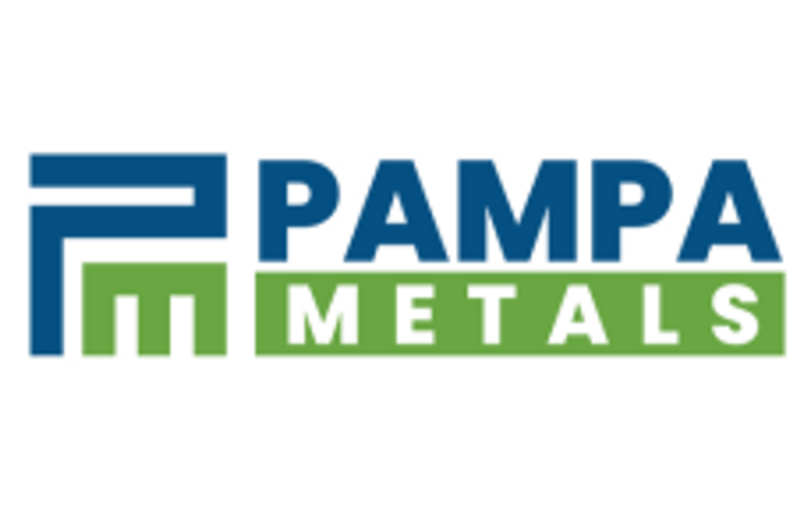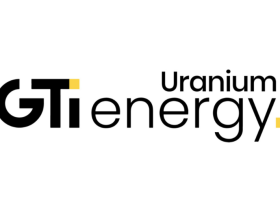Overview
Demand for copper continues to be driven by the ongoing industrialization and advancement of developing economies, together with global decarbonization trends; whilst the supply-side response and development of new copper projects struggle to keep up with projected demand. Consequently, and further exacerbated by the declining production of many major mines, the supply-side shortfall is expected to continue to widen significantly in the coming years, positively impacting copper prices.
Chile has been the top copper producer globally since the early 1980s, and accounts for roughly 27 percent of global copper supply (2021), more than double the second-ranked nation. The Domeyko Mineral Belt is the world’s most prolific copper belt and is host to three of the world’s top five copper mining districts. The Paleocene Belt also hosts globally significant deposits and operations. Owing to the challenges in securing meaningful tenure along these belts, both belts remain underexplored.
Pampa Metals – Project Locations in Northern Chile with Mineral Belts
The Domeyko Mineral Belt is characterized by a complex system of faults that run parallel to the Andean mountains and Chilean coastline. These faults have acted as key geologic controls on the emplacement of porphyry copper deposits, including those within three of the world’s five largest copper mining districts at Collahuasi, Chuquicamata and La Escondida. The La Escondida-Zaldivar copper mining complex is the world’s largest copper mining district.
Other significant copper mining districts along the belt occur at Centinela and El Salvador. Pampa controls one of the few significant, junior-owned land packages along the Domeyko Belt, providing its shareholders with unique exposure. The company’s flagship Block 4 copper project lies along the Domeyko Belt and hosts several untested, drill-ready targets, defined by geology, geophysics, geochemistry and age-dating carried out by Pampa over the last 18 months.
Company Highlights
Pampa Metals is listed on the Canadian Stock Exchange (CSE:PM), Frankfurt (FSE:FIRA) and OTC (OTCQB:PMMCF) exchanges and wholly owns a portfolio of projects highly prospective for copper, molybdenum and gold along proven and highly productive mineral belts in Chile, the world’s largest copper producer. The company believes the outlook for copper is highly compelling, driven by ongoing industrialization in the developing world and significant new demand growth from the global energy transition. On the supply side, major underinvestment in exploration and new project development has industry leaders and commodity analysts predicting significant supply deficits and elevated copper prices for the foreseeable future. Specifically, the company is seeking to acquire a project with the following characteristics:Historic ore grade interval(s);Opportunity to quickly establish a meaningful initial mineral resource estimate;Conceptual copper production profile of +30,000 to 50,000 tons per annum (tpa); andConceptual capex of less than $500 million.Concurrently, the company is pursuing monetization and/or farm-out of the other projects in its Chilean portfolio.A small number of projects with potential to meet the above criteria are in the early stages of review.Aligned with the company’s revised focus and strategy, a significant cost-cutting and portfolio rationalization exercise has been implemented.
Key Projects
Block 4 Copper Project
Pampa Metals’ 100-percent-owned Block 4 project, located along the Domeyko Mineral Belt, hosts several untested porphyry copper targets. The project covers over 6,600 hectares and is located along trend some 110 kilometers south of the major Escondida-Zaldivar copper mining complex. The Buenavista Target hosts dacite porphyry, evidence for phreatomagmatic breccia, quartz-veinlet stockwork, quartz-sulphide breccia, and trenches containing copper-moly-gold-silver anomalies, with complementary geophysical anomalies. Additional targets are largely defined by geophysical anomalies through post-mineral cover and may suggest a cluster of porphyry systems on the Block 4 property.
Quartz Veinlet Stockwork Zone at Buenavista, Block 4
Project Highlights:
Untested Porphyry Copper Targets: Block 4 has received minor historic exploration, including reconnaissance drill-testing, and the Buenavista Target was recently drill-tested, however a number of additional geophysical targets remain untested.Completed Exploration Campaigns Demonstrate Potential: Pampa Metals has completed several surface exploration campaigns to identify priority targets to date:Geological mapping and ground magnetics surveying (Q4 2021)Resulted in the identification and discovery of the Buenavista TargetTrenching and rock sampling (Q1 2022)Assays up to 0.26 percent copper, including 24 meters at 0.14 percent copper.Assays up to 0.64 g/t gold, including 24 meters at 0.25 g/t gold.IP geophysical surveying (Q2/Q3 2022)Geochemical soil sampling (Q3/Q4 2022)2023 Drill Program: A 2,100-meter discovery diamond drill campaign was completed in Q2 2023 and intersected hydrothermal alteration and mineralization indicative of the upper parts of a porphyry copper system. Individual samples reported maximum assay grades of 1.86 g/t gold (hole BV02-2023), 30 g/t silver (hole BV02-2023), 0.45 percent copper (hole BV02-2023) and 1,715 ppm molybdenum (hole BV03-2023).
Cerro Buenos Aires Copper Project
Pampa Metals’ 100-percent-owned, 7,000-hectare Cerro Buenos Aires project is located along the Paleocene Copper-Gold mineral belt in Northern Chile, along trend from the major precious metals district at El Peñon, as well as significant copper deposits such as Spence and Sierra Gorda. The project displays hydrothermal alteration typical of high-sulphidation epithermal and porphyry deposits over about 12 kilometers north-south. Limited historic drilling has cut both minor precious metals and porphyry-related intercepts. Pampa’s work has highlighted a largely covered porphyry copper target in the north, Cerro Chiquitin, based on limited geological outcrops, geophysics, geochemistry, and wide-spaced reconnaissance reverse-circulation drilling. The core target at Cerro Chiquitin remains to be tested with diamond drilling. Other geochemical and geophysical anomalies on the large property, typified by a widespread post-mineral cover, remain to be followed up to define drill targets.
Project Highlights:
Untested Porphyry Copper Targets: The core of the Cerro Chiquitin target is obscured by post-mineral cover and remains to be followed up by diamond drilling. Other potential post-mineral covered targets on the property require further surface follow-up, largely focused on geophysics and geochemistry, prior to possible drill testing.Proposed Diamond Drill Program: The work carried out by Pampa Metals in the Cerro Chiquitin area has defined a drill target where approximately 1,500 meters to 2,000 meters of diamond drilling is proposed.Completed Exploration Campaigns Demonstrate Potential: Historic exploration campaigns at Cerro Buenos Aires have included geological mapping, geophysical surveys (heli-borne magnetics, heli-borne EM, limited CSAMT), geochemical surveys over portions of the property (soil sampling, limited rock sampling), and limited historic, reconnaissance-style reverse-circulation drilling. Pampa has access to these databases.Additionally, Pampa has completed:Detailed geological mapping – indicating the presence of a likely porphyry system in the Cerro Chiquitin area, including porphyry-style veining and a tourmaline breccia.IP geophysical surveying in the Cerro Chiquitin area – gradient array and pole-dipoleWide-spaced reconnaissance reverse-circulation drilling in covered areas to the north and south of Cerro Chiquitin – enabling zonation models to define the current target requiring drill follow-up.
Morros Blancos
The 9,000-hectare Morros Blancos project hosts several maar-diatreme complexes prospective for high-sulfidation epithermal gold-silver, as well as the undrilled, sub-cropping, Morro Colorado porphyry copper-gold-molybdenum target. The project is located along the Paleocene Mineral Belt, which hosts major copper deposits in southern Peru and northern Chile, and is immediately east of Austral’s operating Amancaya gold-silver mine, and along trend from the giant El Peñon gold-silver mineral district.
Morros Blancos displays hydrothermal alteration focused in three separate target areas along a 15-kilometer corridor oriented north-northeast, with characteristics of high-sulphidation epithermal gold-silver deposits. Geological features of particular interest include maar-diatreme complexes, other widespread phreatomagmatic events, widespread advanced argillic alteration, and surface geochemical pathfinder anomalies.
Project Highlights
Regional Geology: The Paleocene-Eocene mineral belt extends 1,500 kilometers from southern Peru to central northern Chile. The belt is host to major porphyry copper deposits such as Quellaveco in Peru and Spence in Chile, as well as major low-sulfidation epithermal and high-sulfidation epithermal gold-silver deposits.Limited Historical Exploration: Morros Blancos was subject to minimal historic exploration with minor soil sampling, geophysics (magnetics), trenching and minor, peripheral drilling, giving way to significant exploration upside potential.Work Completed: Detailed geological mapping, surface soil geochemical sampling, geophysics (magnetics, CSAMT), and limited shallow drilling at Rosario del Alto have been completed in 2021 and 2022.Work Planned: Work plan includes drill testing of the Morro Colorado and Rosario del Alto targets, mapping and sampling of the Morro Blanco target, and possible property-wide IP geophysics.
Management Team
Joseph van den Elsen – President and CEO
Joseph van den Elsen is a dual Australian/Colombian citizen who currently serves as the chairman of Ronin Resources Ltd (ASX:RON) and has held a number of executive and non-executive positions with listed and unlisted mineral exploration and development companies including Ookami Ltd (ASX:OOK), MHM Metals (ASX:VYS.), Ascot Resources (ASX:AZQ:), OAR Resources Ltd (ASX:OAR), Arcadia Minerals Ltd (ASX:AM7), Arkham Metals and Hampshire Mining. Previous experience also includes serving as an associate director with UBS and holding a comparable position with Goldman Sachs JBWere. He graduated from LaTrobe University with a Bachelor of Arts and a Bachelor of Laws and later graduated from the University of Melbourne with a graduate diploma in environment, energy and resources law, and from Curtin University with a graduate diploma in mineral exploration geoscience. Van den Elsen is currently pursuing a Master of Science (mineral economics) through Curtin University.
Timothy Beale – VP Exploration
Timothy Beale is a geologist with 30 years of technical, operational and commercial experience in mineral exploration, including senior management roles, gained from work in a wide range of commodities, but focused on copper and gold-silver, and multiple jurisdictions and cultures working with BP Minerals, Rio Tinto, Anglo American, and Hochschild Mining in Europe, South America, and North America.
For the last 10 years, Beale has worked in the junior exploration world, with roles including president and CEO, with a focus on South America and Chile in particular. Beale is fluent in Spanish and has lived in three central Andean countries over a period of 20 years prior to moving to Canada, where he currently resides. He has been involved in the early-stage discoveries at Altar (Argentina), and San Jose (Argentina), and led the Peruvian team at Anglo American in the successful US$400-million bid for the Michiquillay porphyry copper deposit privatized by the Peruvian government.
Beale was also involved in raising more than $25 million on equity markets, was integral in completing the merger of two junior companies and was a founder and key driver of the RTO that formed Pampa Metals. Beale has held directorships of public junior companies and remains a director of one public junior company.
Beale has a Bachelor of Science from the University of London, and a Master of Science from the Royal School of Mines, Imperial College in London.
Adrian Manger – Chairman and Director
Corporate finance executive with 35 years of minerals industry experience, comprising 20 years in executive and leadership roles with BHP, including the $US1-billion development of the Spence copper mine in Chile. Manger has substantial business experience in South America. He is a co-founder and director of various business enterprises in Australia, Chile and Peru, with private and public financings exceeding $30 million. Manger led or participated in corporate finance transactions involving entity sales to public companies; IPO of SensOre, RTO of Pampa Metals; merger to form CopperEx; financings from HNW’s Investment Bank & Private Equity; and multiple commercial transactions. He holds public directorship with SensOre Ltd (ASX: S3N), leading the application of AI/ML to minerals exploration. He is a founding board member of the Australia Colombia Business Council; former board member of Fundación Buen Punto, a Colombian not-for-profit community sports foundation aimed at utilizing iconic sports to foster sports diplomacy and peace for underprivileged youth and children; and former committee member of the Bogota Bulldogs Australian football club.
Julian Bavin – Director
Julian Bavin has 30 years of technical, operational and commercial experience in mineral exploration gained from work in a wide range of commodities, jurisdictions and cultures, most of which was spent with the Rio Tinto Group in South America, Australia, Indonesia and Europe. From 2000 to 2001, he was the business development executive for the Industrial Minerals Group in Rio Tinto, progressing opportunities in Europe and South America. From 2001 to 2009, he was the exploration director for the Rio Tinto Group in South America and responsible for the teams which identified the potential in a range of projects now in various stages of feasibility, including the Rio Colorado potash and Alter copper/gold projects in Argentina, the Mina Justa, Constancia and La Granja copper projects in Peru, and the Amargosa bauxite project in Brazil. After South America, he moved to London as Rio Tinto’s exploration director responsible for Africa, Europe, the Middle East and the Former Soviet Union, with a brief that included the Jadar lithium-borates discovery in Serbia (now in feasibility).
Bavin has a Bachelor of Science from the University of Leicester, a Master of Science from Imperial College in London and is a graduate of the senior executive program at the London Business School.
Bill Tsang – Chief Financial Officer
Bill Tsang brings more than 15 years of accounting experience in the mineral exploration and mining industry focusing on financial reporting, regulatory compliance, internal controls, and corporate finance activities. Tsang has held numerous CFO positions with publicly traded entities. He has worked in public practice providing professional services and advice to publicly traded companies on the NYSE, TSXV and OTC markets, on various public reporting services, such as audit requirements, qualifying transactions for reverse takeover, mergers and acquisitions, and financing transactions. Tsang holds a Bachelor of Commerce from the University of British Columbia and is a chartered professional accountant and chartered accountant.





